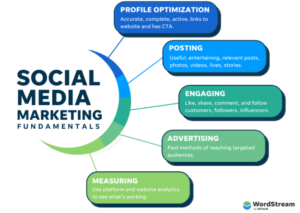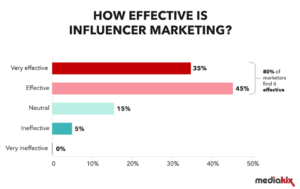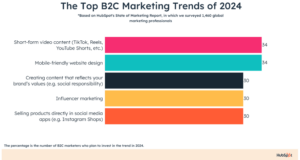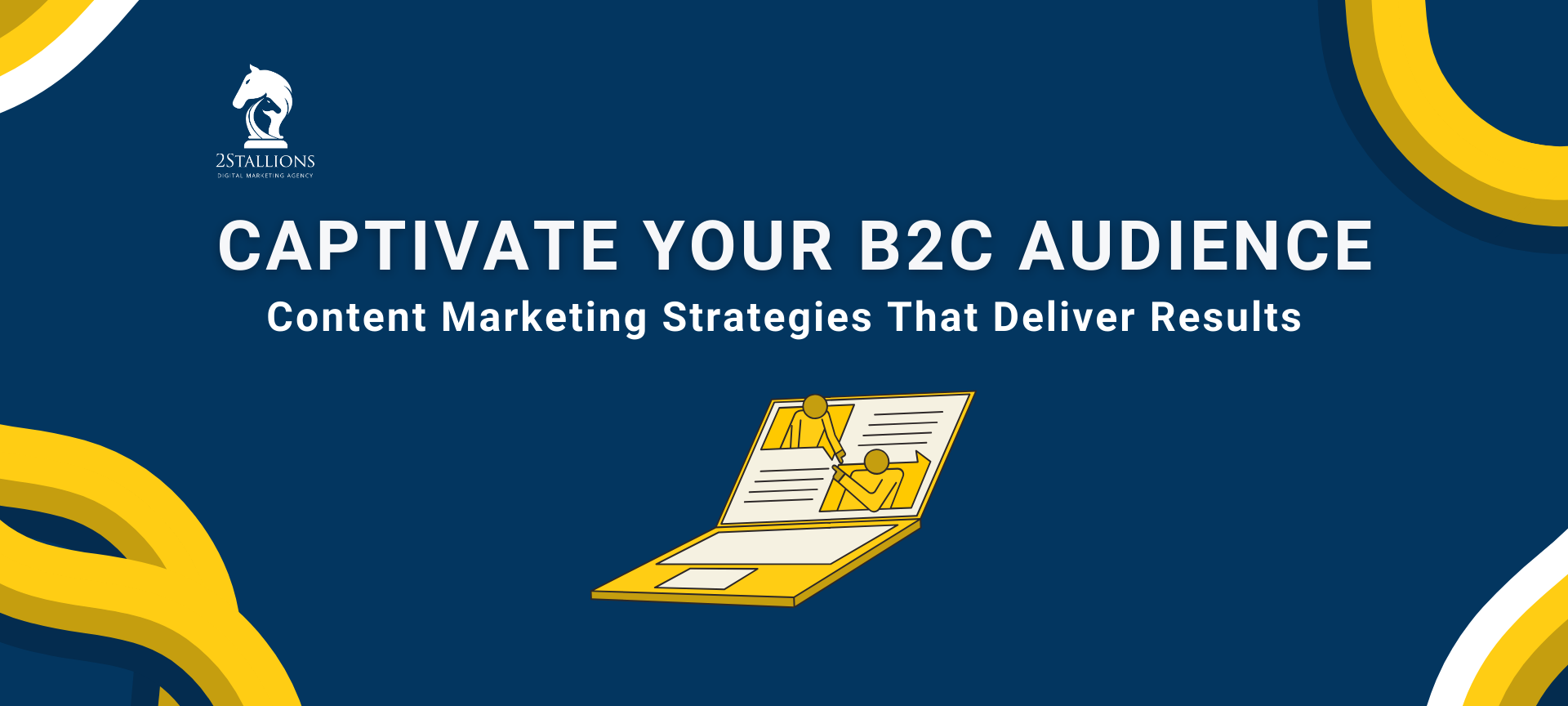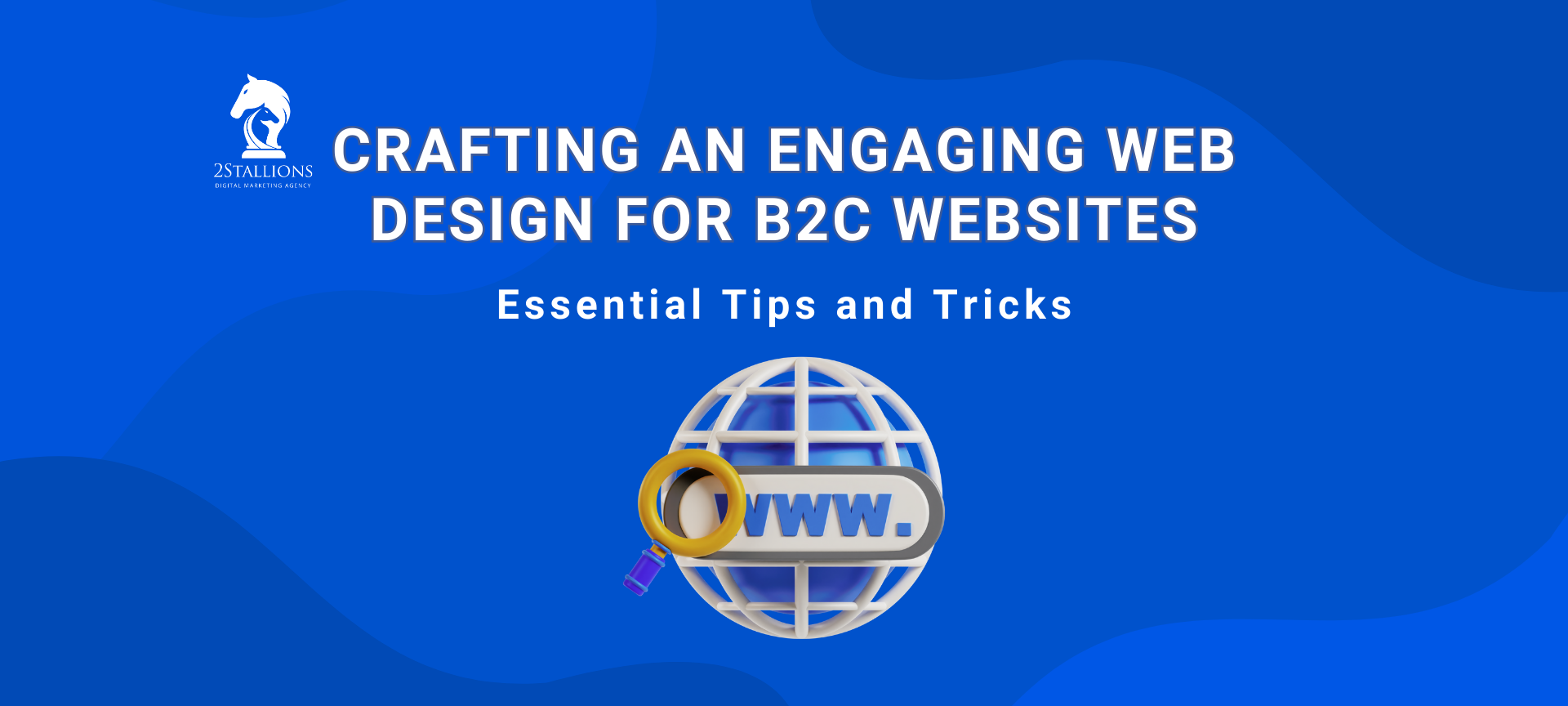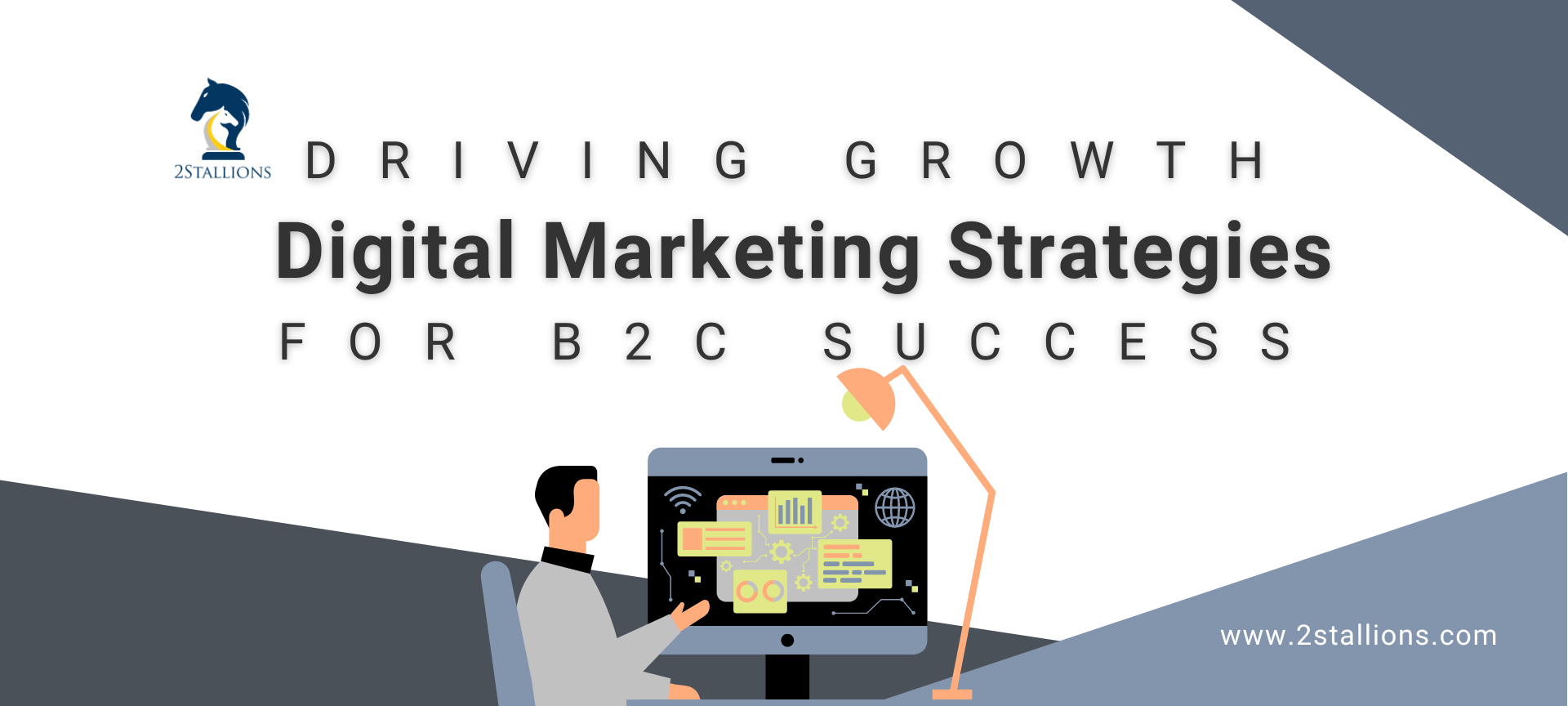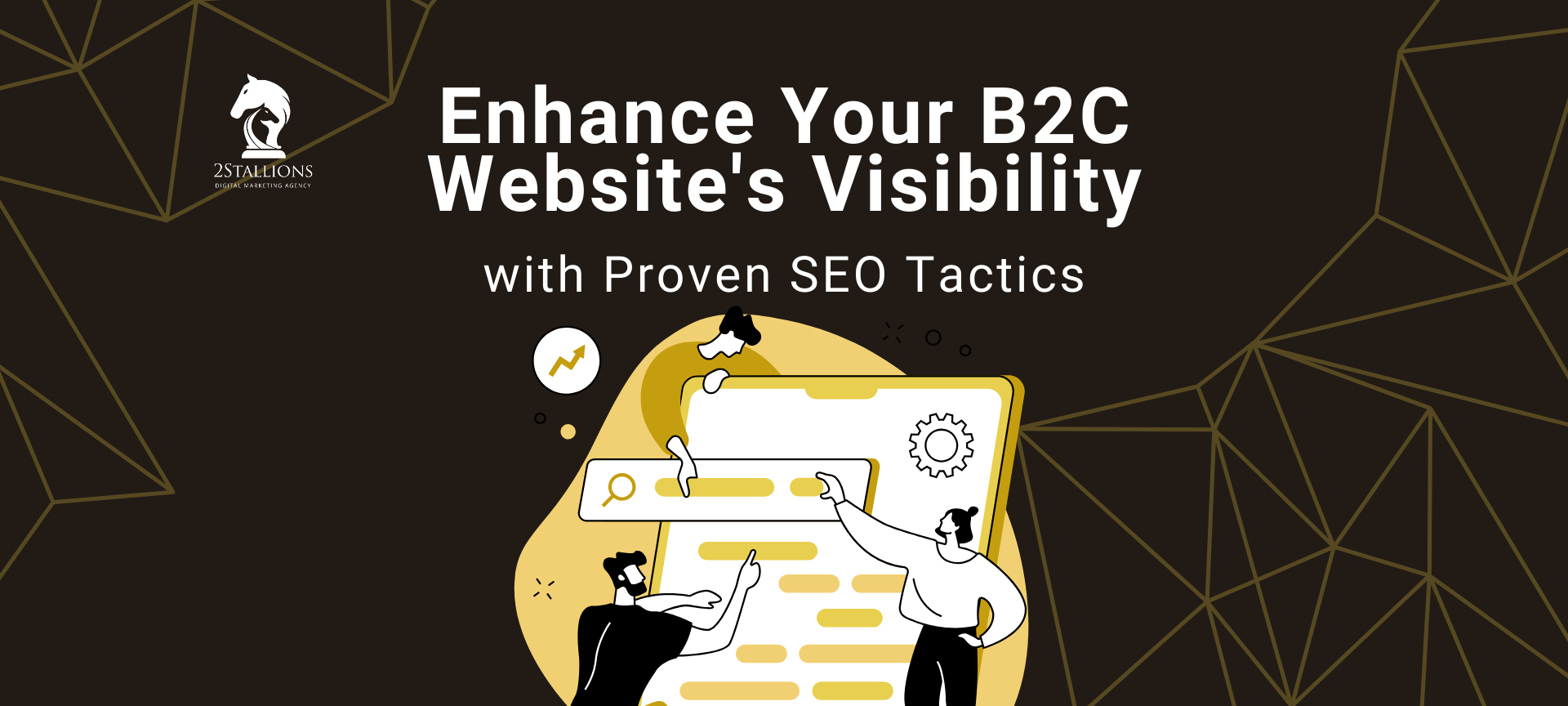SHARE
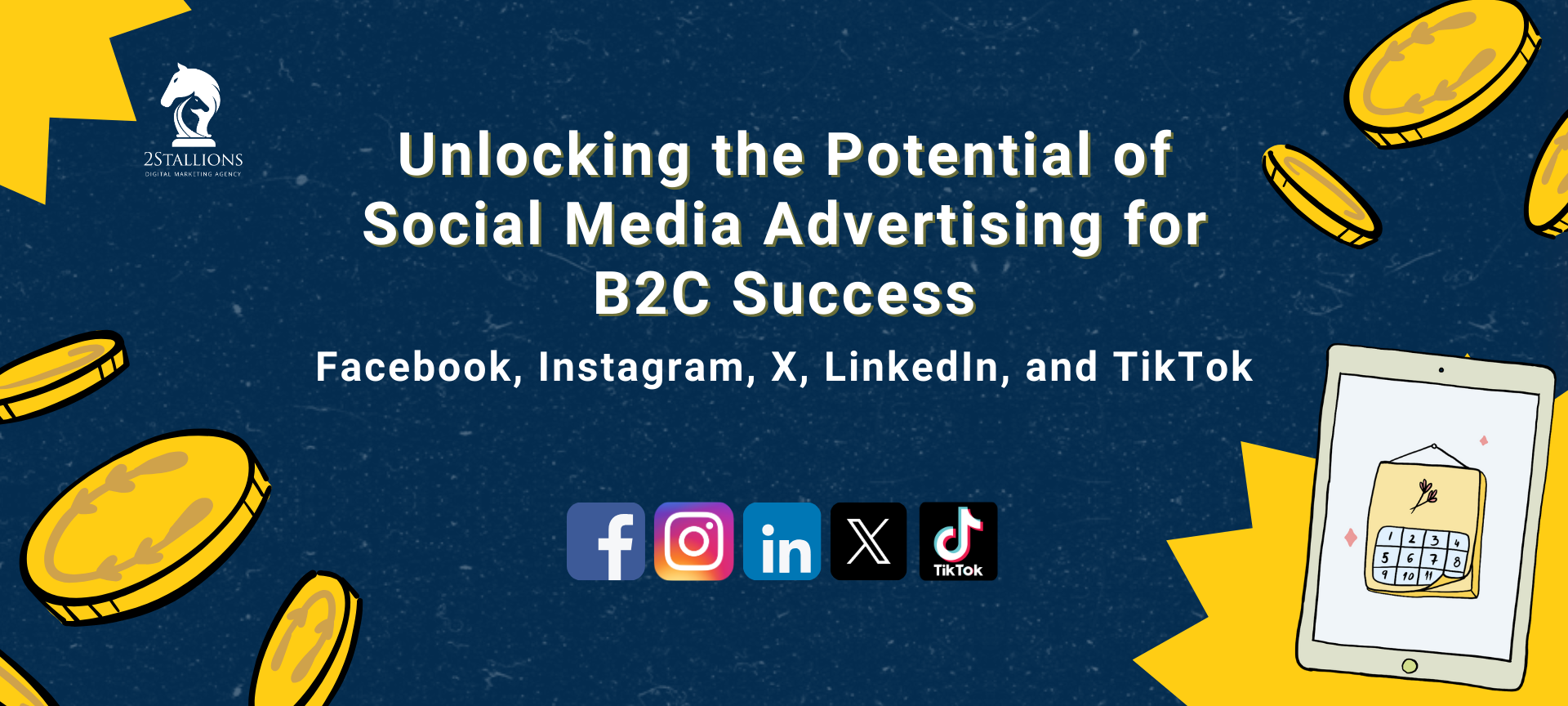
Social media has revolutionised the way businesses connect with their target audience. In the B2C (business-to-consumer) space, platforms like Facebook, Instagram, Twitter, LinkedIn, and TikTok offer unprecedented opportunities for brands to engage and build customer relationships This article explores the power of social media advertising in B2C marketing and provides insights into how businesses can harness the potential of each platform.
( Source: WordStream )
Understanding the Power of Social Media in B2C Marketing
The role of social media in modern business cannot be overstated. With billions of active users worldwide, these platforms have become essential tools for brands to connect, engage, and influence their target audience. Social media allows businesses to humanise their brand, foster meaningful interactions, and create a sense of community with their customers.
For B2C companies, leveraging social media is becoming increasingly important. These platforms provide access to a vast audience, enabling businesses to reach potential customers at scale. Moreover, social media platforms offer sophisticated targeting capabilities, allowing brands to deliver personalised content to the right people at the right time.
One key aspect of social media marketing for B2C companies is the ability to gather valuable insights and customer feedback in real time. Monitoring comments, messages, and engagement metrics can help understand audience preferences, behaviours, and sentiments. This data can then be used to refine marketing strategies, develop new products or services, and enhance overall customer experience.
Furthermore, social media platforms provide B2C companies with a direct line of communication to address customer inquiries, resolve issues, and build trust and loyalty. Through timely responses and proactive engagement, brands can demonstrate their commitment to customer satisfaction and showcase their dedication to exceptional service.
The Anatomy of Successful Social Media Advertising
Successful social media advertising relies on several key elements. Firstly, compelling visuals are crucial to capture users’ attention and generating engagement. Eye-catching images or videos can make a significant difference in ad performance.
When creating compelling visuals for social media advertising, it’s essential to consider factors such as colour psychology, image composition, and the use of on-trend design elements. These elements can help ads stand out in crowded social media feeds and resonate with the target audience on a deeper level.
Additionally, crafting ad copy that resonates with the target audience is important. Advertisements should communicate the value proposition and address potential customers’ pain points or desires. By speaking directly to audience needs, brands can increase the likelihood of generating conversions.
Conducting thorough market research to understand the language, tone, and messaging that will most effectively connect with the target demographic is crucial when crafting ad copy. Tailoring the ad copy to align with the preferences and behaviours of the audience can enhance the overall effectiveness of the social media advertising campaign.
Furthermore, social media ads should be designed for mobile devices, as users access these platforms through their smartphones. Ensuring mobile ads are easy to view and interact with can significantly improve the user experience and drive better results.
Mobile optimisation goes beyond responsive design; it involves load times, ad placement within the feed, and interactive element usage conducive to touchscreen navigation. By prioritising mobile-friendly design, brands can maximise the reach and impact of their social media advertising efforts.
Diving into the World of Facebook Advertising
When it comes to B2C advertising, Facebook is a powerhouse. With over 2.8 billion monthly active users, the platform offers unparalleled reach and targeting capabilities. Businesses can segment their target audience based on demographics, interests and behaviours.
Creating a compelling Facebook ad campaign involves understanding the platform’s unique features and best practices. For instance, clear and attention-grabbing headlines, high-quality visuals, and concise ad copy can capture users’ attention as they scroll through their newsfeeds.
Furthermore, leveraging Facebook’s advanced targeting options can significantly enhance ad performance. Businesses can target specific demographics, interests, and behaviours to ensure their ads are seen by the most relevant audience, maximising the return on investment (ROI).
One key aspect to consider when delving into Facebook advertising is the importance of A/B testing. This strategy involves creating multiple versions of an ad with slight variations in elements such as headlines, images or calls to action. By testing these variations with a sample audience, businesses can gather valuable data on which elements resonate best with their target market, allowing them to refine their ads for maximum effectiveness.
Another crucial factor in successful Facebook advertising is understanding the platform’s algorithm. Facebook uses a complex algorithm to determine which ads are shown to users based on relevance, engagement, and bid strategy. By staying informed about the latest updates to the algorithm and adjusting their ad strategies accordingly, businesses can stay ahead of the competition and ensure their ads are being seen by the right audience at the right time.
( Source: MediaKix )
Harnessing the Visual Power of Instagram
Instagram, with its visually-driven format, presents immense opportunities for B2C advertising. With over 1 billion active users, the platform’s engagement rates are higher than other social media platforms.
When advertising on Instagram, creating visually appealing and relevant content that aligns with the brand’s aesthetic and values is important. High-quality images or videos that evoke emotions and spark interest can increase engagement and conversions.
Utilising Instagram’s advertising features, such as Instagram Stories or shoppable posts, can provide additional touchpoints to showcase products or services and drive direct sales. Moreover, collaborating with influencers who genuinely connect with the target audience can amplify the brand’s reach and impact on the platform.
Instagram’s algorithm favours content that encourages meaningful interactions, so creating posts that prompt users to engage through likes, comments, or shares can help boost visibility. Additionally, using relevant hashtags can expand the reach of posts to a wider audience interested in similar content.
Maintaining a consistent posting schedule to keep followers engaged and attract new ones is crucial. By analysing insights on Instagram’s analytics tools, businesses can gain valuable data on their audience demographics, behaviour, and preferences, allowing for more targeted and effective marketing strategies.
Making the Most of Twitter’s Fast-Paced Environment
Twitter’s fast-paced and real-time nature lends itself well to B2C advertising. With its 330 million monthly active users, Twitter offers a unique platform for brands to reach a wide audience and engage in timely conversations.
Twitter advertising for B2C companies requires a strategic approach. Crafting concise and compelling ad copy is crucial in capturing users’ attention within the limited character count. Effective use of hashtags can extend the reach of ads and tap into relevant conversations.
Moreover, leveraging Twitter’s trending topics or popular hashtags can enable brands to participate in timely discussions and enhance their visibility. Businesses can increase brand awareness and engagement on the platform by joining conversations that resonate with their target audience.
Maintaining an authentic voice on Twitter to build trust and credibility with their audience is important. Engaging with followers through replies, retweets, and likes can humanise the brand and foster a sense of community. This two-way communication is essential in establishing lasting relationships with customers.
Furthermore, monitoring analytics and performance metrics is key to refining Twitter advertising strategies. By analysing data on engagement, click-through and conversion rates, brands can optimise their campaigns for better results. Continuous testing and iteration based on these insights can improve ROI and overall campaign success.
LinkedIn: Reaching Professionals in a Business Context
LinkedIn, a professional social network, provides a unique environment for B2C advertising. With over 772 million global members, this platform enables brands to connect with professionals in a business context.
When advertising on LinkedIn, it is important to tailor the messaging and content to resonate with the professional audience. Highlighting a product or service’s value proposition and business benefits can drive engagement and conversions.
Furthermore, leveraging LinkedIn’s targeting options, such as job titles, industries, or company size, allows businesses to deliver ads to specific segments of professionals most likely to be interested in their offerings.
( Source: Hubspot )
Tapping into TikTok’s Growing Influence
TikTok, the wildly popular short-video platform, has gained significant traction recently. With its younger user base and unparalleled virality potential, TikTok presents unique opportunities for B2C brands.
Creating engaging and authentic video content is at the heart of successful TikTok advertising. Brands can leverage popular trends or challenges to connect with the platform’s community and generate user-generated content.
Furthermore, collaborating with TikTok influencers with a large following can help amplify the brand’s reach and credibility. Authenticity and creativity are key on this platform, and brands that can authentically connect with TikTok users can unlock their full potential for B2C success.
Conclusion
Social media advertising has become indispensable for B2C companies looking to succeed in the digital landscape. Facebook, Instagram, Twitter, LinkedIn, and TikTok each offer unique advantages and targeting capabilities that businesses can tap into to reach their target audience effectively.
By understanding the power of social media in B2C marketing, the key elements of successful ad campaigns, and the nuances of each platform, businesses can unlock the potential of social media advertising and drive B2C success in the ever-evolving digital world.
Frequently Asked Questions About Unlocking the Potential of Social Media Advertising for B2C Success: Facebook, Instagram, Twitter, LinkedIn, and TikTok
What makes social media advertising effective for B2C marketing?
Social media advertising is effective for B2C marketing because it allows businesses to directly target and engage with consumers based on detailed demographic, geographic, and psychographic data, enhancing the precision and relevance of marketing efforts. click edit button to change this text.
How should businesses approach advertising differently on Facebook vs. TikTok?
On Facebook, businesses should focus on detailed targeting and engaging content that fosters community interaction. On TikTok, the emphasis should be on trending content, creative visuals, and leveraging the platform’s unique features like challenges and effects to engage younger audiences.
What are the best practices for using Instagram for B2C advertising?
Best practices for Instagram include using high-quality visuals, storytelling through posts and Stories, leveraging influencer partnerships, and utilising Instagram Shopping features to directly link products in posts to increase conversions.
Can LinkedIn be effective for B2C advertising?
LinkedIn can be effective for B2C, especially for businesses whose products or services align with professional development, business solutions, or higher-end consumer goods. Sponsored content and direct messaging are effective strategies on this platform.


